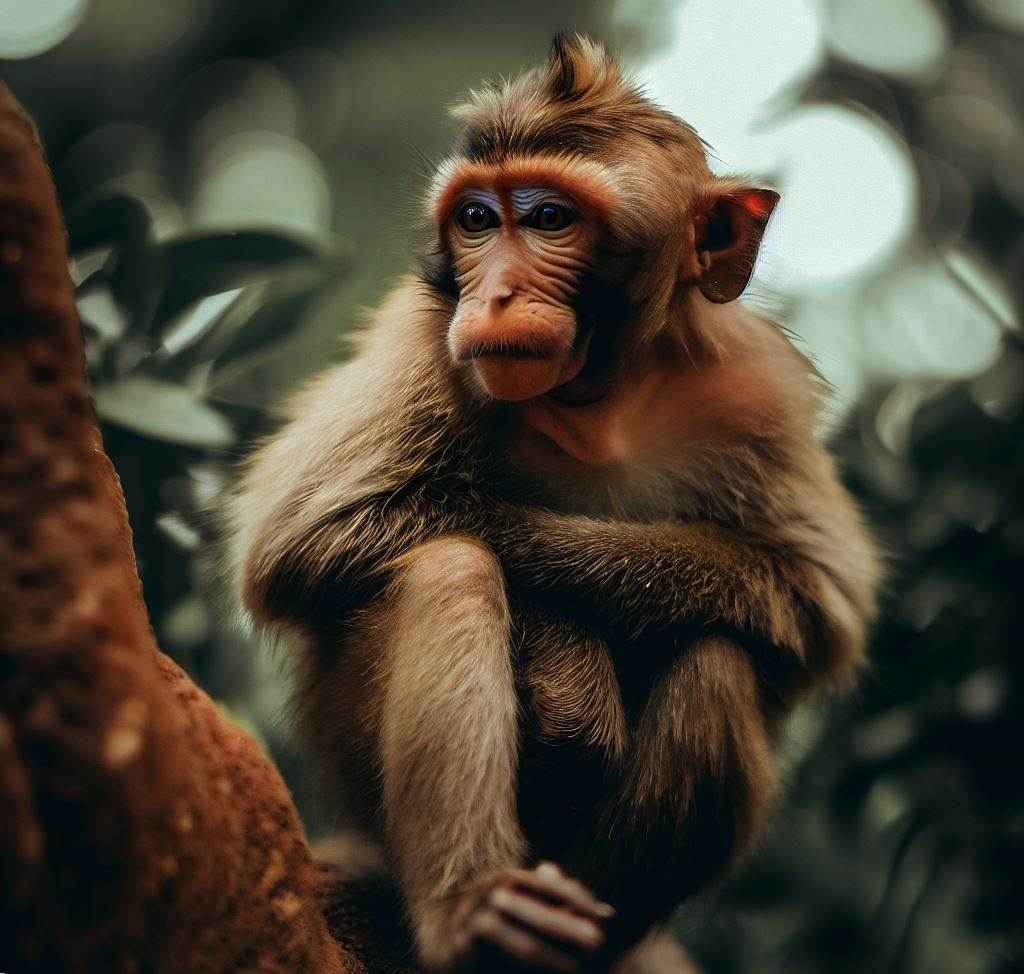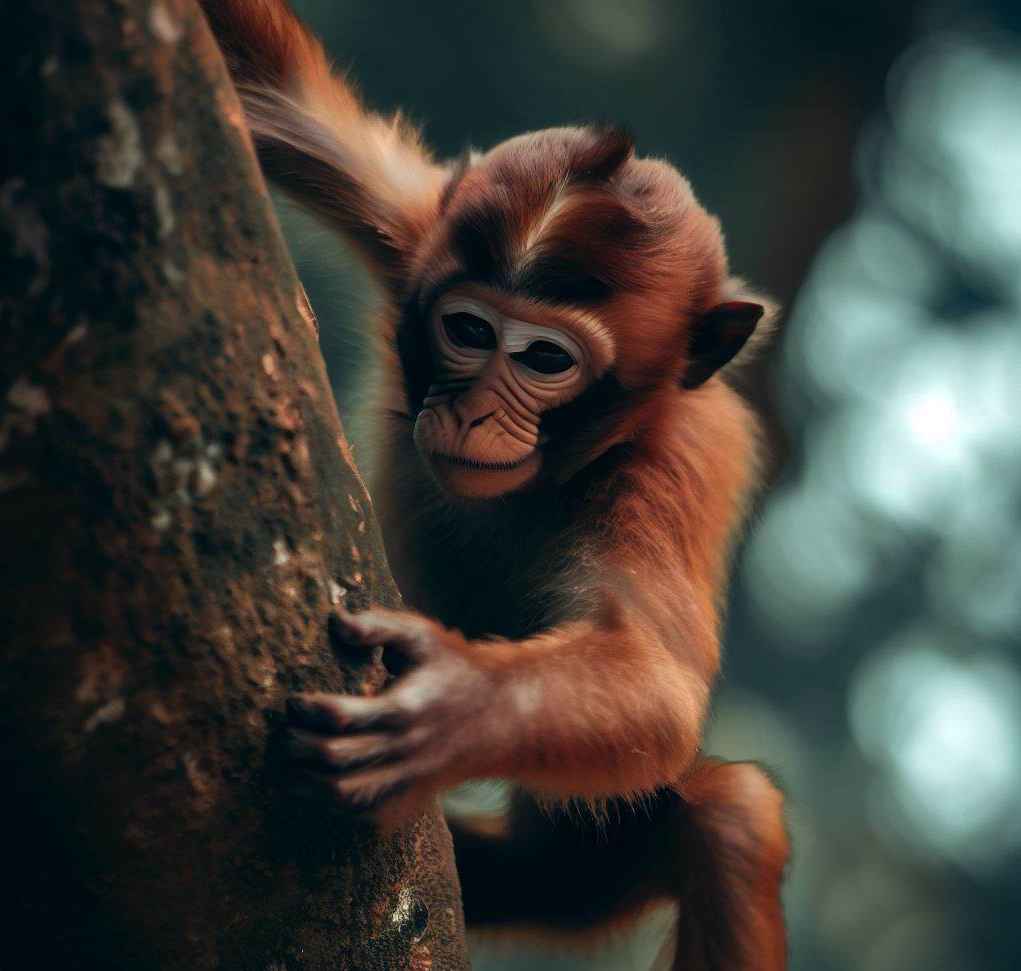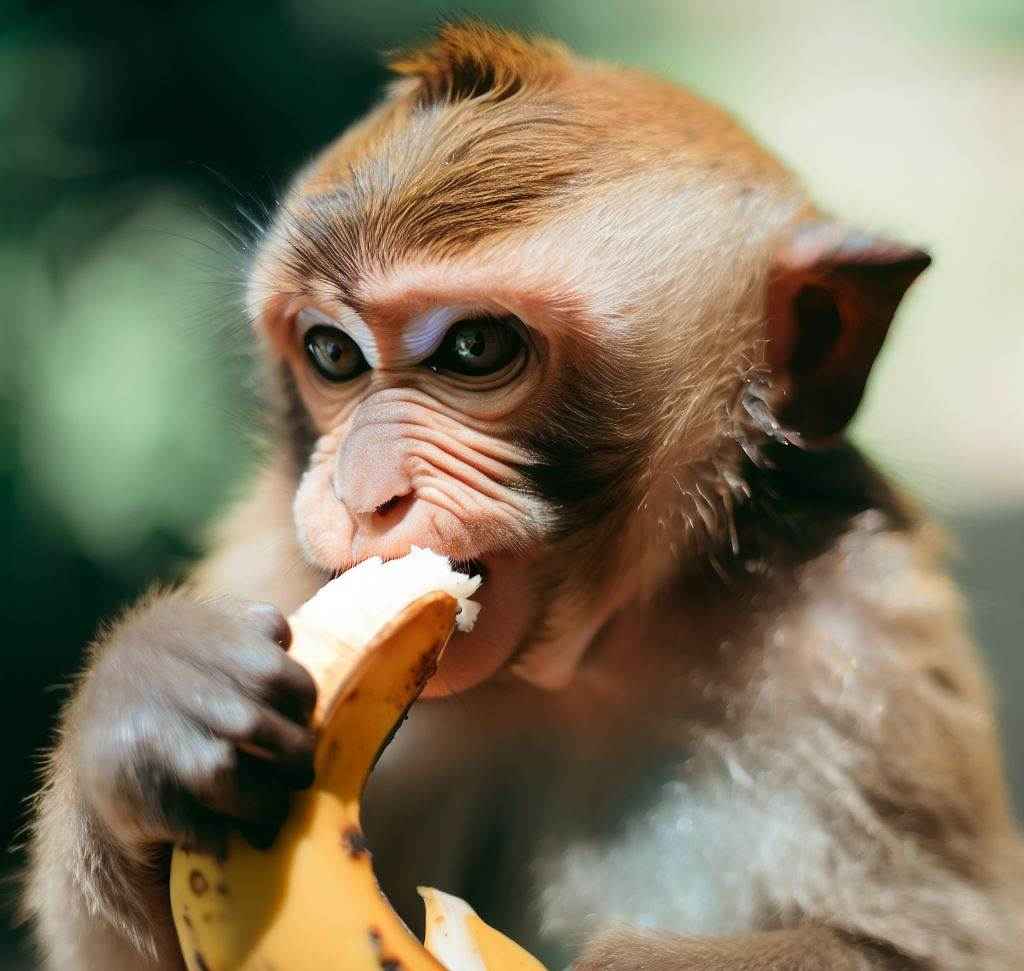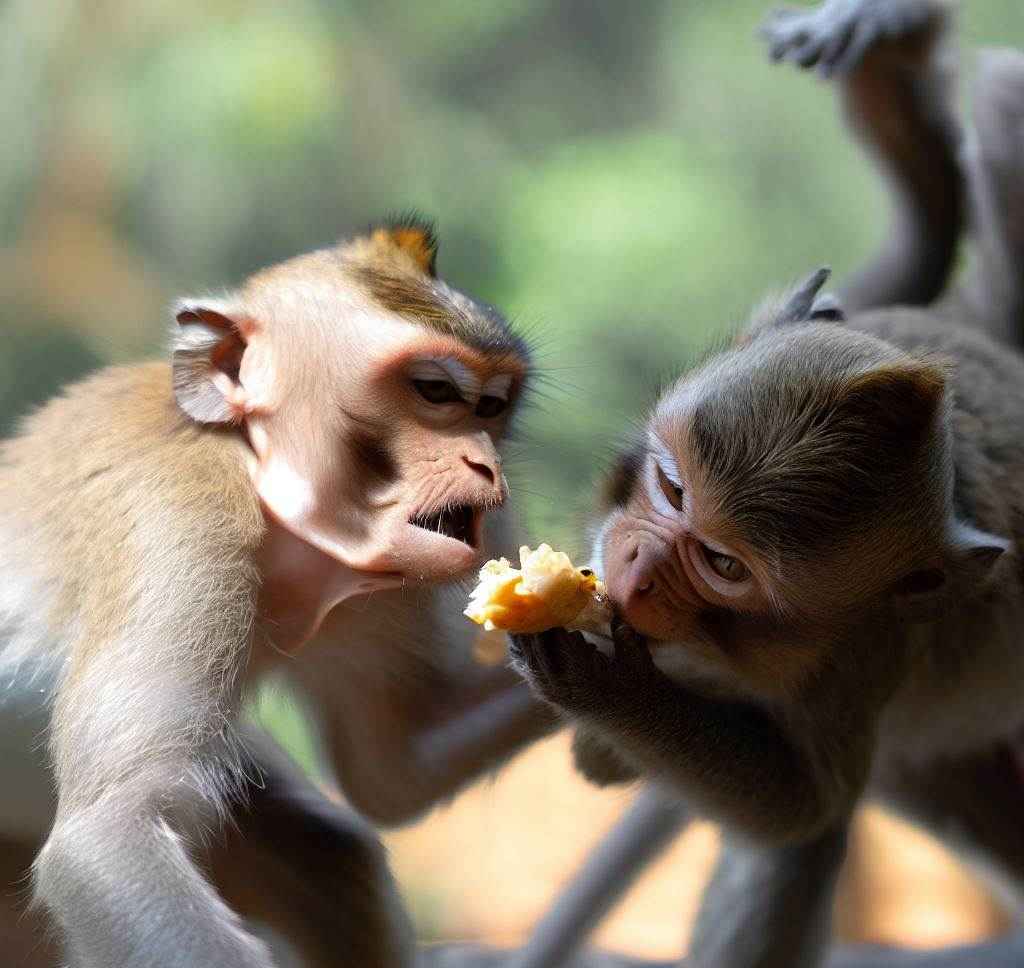Introduction:
The adaptations of a monkey to its environment are incredible. The monkeys are captivating creatures that have amazed scientists and animal enthusiasts for ages. These intelligent primates included the narrow of the specialized features that helps them to survive and thrive in their respective habitats. From their alert fingers to their expansive vision they possess a collection of adaptations that enables them to become the master of the environment.
In this context, we will searched into the fascinating world of monkey adaptations, discovering the secrets behind their vital abilities. If you are a nature lover or simply want to know about curious enchanting creatures. You can also know about other mammals adaptation of a jaguar, as we revealed the captivating adaptations of a monkey and discover the wonders of their natural powers.
Adaptations Of A Monkey For Survival:
In the world of green vegetation or the number of life that exist in the forest. The harsh and dangerous environment of the forest enables the animals to make adaptations to survive in this harshly green environment. Like the other animals monkeys also adopted some physical characteristics to survive in the forest including their casting skills and behavioral adaptations.
Monkeys have developed an attractive ray of adaptations for their survival in their diverse habitats. One remarkable adaptation is their active hands and feet which are equipped with great thumbs and flexible digits that enable them to grasp and manipulate objects with precision.
This adaptation allows them to swing effortlessly from many of the tree branches, gather food, and construct intricate nests. Furthermore, the monkeys acquire stereoscopic vision, providing them with excellent depth perception to navigate through challenging environments like dense forests or rocky terrains.
Their color vision, another crucial adaptations of a monkey, allows them to spot ripe fruits, identify potential mates, and recognize fellow members of their social group. Agile bodies and limbs enable monkeys to move swiftly and gracefully, leaping across tree branches, swinging from vines, and evading predators.
These adaptations, along with their ability to communicate through vocalizations and alarms, live in groups for safety and utilize camouflage, contribute to the monkeys’ remarkable survival skills in their ever-changing habitats. Understanding the fascinating adaptations of a monkey sheds light on the brilliance of nature’s design and the remarkable abilities of these adoptative creatures.
Physical Characteristics Of Monkey:
Physical adaptations are those adaptations that help a monkey to move, listen, fight, protect, etc. These adaptations are beneficial to them for their survival.
Dexterous Hands and Feet:
Monkeys acquire an additional ability in their hands and feet that allows them to grasp and manipulate objects with precision. Their opposable thumbs and flexible digits enable them to swing from tree branches, gather food, and build nests. This adaptation is vital for their survival in forested areas where they spend significant time.
Stereoscopic Vision:
Most of the monkeys have forward-facing eyes providing them with stereoscopic vision. This adaptations of a monkey helps them for excellent depth perception and allows them to judge accurate distances and navigation complex environments such as dense forests or rocky terrains.
Prehensile Tails:
Certain monkey species, such as spider monkeys and howler monkeys, possess prehensile tails. These modified tails can curl and grip objects and act as an additional limb. Prehensile seats are generally useful for climbing trees, maintaining balance, and reaching out for distant food sources. They also serve as a safety mechanism to prevent monkeys from falling off from the high places.
Color Vision:
Monkeys possess a powerful color vision which helps them to differentiate between the various shades and hues. This adaptation enables them to spot ripe fruits, identify potential mates, and recognize other monkeys within their social group. Their quality to discerning colors is good for foraging and social interactions.
Agile Bodies and Limbs:
Monkeys have involved agile bodies and limbs which enable them to move swiftly and with great flexibility. They can leap across tree branches, swing from vines, and navigate complex terrains effortlessly. This adaptation assists them in escaping predators and accessing resources that may be otherwise challenging to reach.
Interesting Facts About Monkeys:
- The monkeys posesed highly flexible hands and feet with great thumbs and flexible digits that allows them to grasp and manipulate objects with precision.
- Many monkey species had prehensile tails that can curl and take objects and acting as an extra limb for climbing and maintaining balance.
- Monkeys have forward-facing eyes, providing them with excellent deep perception and allowing them to accurately judge distances.
- Some monkey species such as the howler monkeys had specially adapted the vocal cords, enabling them to produce incredibly loud calls that can be heard over long distances.
- Monkeys have color vision, which helps them identify ripe fruits, potential mates, and members of their social group.
- Monkeys have agile bodies and limbs, allowing them to move swiftly and navigation complex environments such as forests and treetops.
- Certain monkey species, like the capuchins, have been observed using tools to obtain food, showcasing their cognitive abilities.
- Monkeys often live in social groups called troops, providing safety in numbers and enhancing their chances of survival.
- Monkeys have developed various vocalizations and alarms to communicate with each other, warning of predators and potential threats.
- Some monkey species have adapted to blend in with their surroundings, using camouflage to hide from predators.
- Monkeys are skilled climbers, with specialized adaptations such as strong arms, grasping hands, and flexible joints that allow them to navigate tree canopies.
- Monkeys have a well-developed sense of balance, which is crucial for moving across narrow branches and swinging from tree to tree.
- Monkeys have the hard strong jaws and sharp teeth which helps them to efficiently get a variety of foods, including fruits, leaves, insects, and small animals.
- Monkeys often have a varied diet, adapting to available food sources in their habitats to ensure their survival.
- Some species of monkeys like the mandrills have vividly colored facial patterns that gives them as visual signals to communicate with other members of their group.
- Monkeys exhibit complex social behaviors, including grooming, playing, and forming hierarchical structures within their troops.
- Certain monkey species have developed cheek pouches to store food, allowing them to carry and consume it later when it’s safe.
- They acquires the strong, flexible muscles in their limbs, which enable them to perform legendary leaps and jumps.
- Monkeys have adapted to survive in diverse habitats that include tropical rainforests, savannas, mountains, and even urban environments.
- The adaptations in monkeys are continually evolving met the challenges of their changing environments, showing the incredible abilities and adaptability of these remarkable creatures.
How do Monkeys Protect Themselves?
Monkeys have developed several strategies to protect themselves from predators and ensure their safety:
Group Living:
Living in groups provides monkeys with safety in numbers. By forming troops, monkeys can detect predators more effectively, alert others of potential dangers, and defend against attacks collectively.
Vocalizations and Alarms:
Monkeys use various vocalizations and alarms to communicate and warn others about the presence of predators. This cooperative behavior allows them to stay vigilant and protect each other.
Camouflage and Concealment:
Species of the certain monkeys that have evolved to mix in with their surroundings by using camouflage to hide from predators. By lesses their visibility they increase their chances of survival.
Agility and Speed:
Monkeys rely on their agility and speed to escape from predators. Their ability to swiftly navigate through trees and move rapidly on the ground helps them evade danger.
Diet & Habitat Of Monkeys:
Monkeys possesses the remarkable diversity in their diet and habitat by adapting to a narrow range of environments across the globe. Their diet varies based upon their species and habitat from encompassing fruits, leaves, flowers, insects, nuts, seeds, and even the small vertebrates.
They are inhabiting the tropical rainforests to have access to the concentration of fruit and vegetation while those in savannas and grasslands incorporate a larger proportion of leaves and insects into their diet. Their adaptability is further reflected in their habitat preferences, as monkeys can be found in deep forests in open woodlands, mountains, and even urban areas.
By using their agile bodies and exceptional climbing skills, monkeys navigate their habitats with ease, taking advantage of the available resources for survival. Understanding the diet and habitat of monkeys sheds light on their incredible ability to survive in the diverse ecosystems.
FAQs:
1 What are 3 adaptations of a monkey?
Three adaptations of monkeys include their dexterous hands and feet for grasping, their forward-facing eyes for depth perception, and their agile bodies and limbs for swift movement and navigation.
2 What are the adaptations of a monkey to its environment?
The adaptations of a monkey to its environment include dexterous hands and feet for grasping and manipulating objects, forward-facing eyes for depth perception, and agile bodies and limbs for navigating through complex habitats.
3 What are 5 interesting facts about monkeys?
Five interesting facts about monkeys are: they possess prehensile tails in certain species, they use vocalizations and alarms to communicate, they have color vision, some species use tools for obtaining food, and they live in social groups called troops.
4 How do monkeys protect themselves?
Monkeys protect themselves by living in social groups for safety in numbers, utilizing vocalizations and alarms to warn others of predators, and using their agility and speed to escape from potential threats.
5 How do monkeys survive?
Monkeys survive through their adaptations such as dexterous hands and feet, forward-facing eyes for depth perception, and agile bodies and limbs for navigating their environment, along with their ability to adapt their diet and utilize their social behaviors for protection and acquiring resources.
6 What are 5 adaptations of a monkey?
- Swinging through trees, their long limbs aid in agile arboreal movement.
- Prehensile tails offer an extra limb-like grip for stability and maneuvering.
- Forward-facing eyes provide depth perception for accurate tree-to-tree leaps.
- Complex social behaviors aid in group living and cooperative survival strategies.
- Specialized digestive systems help them process a wide range of fruits and vegetation.





